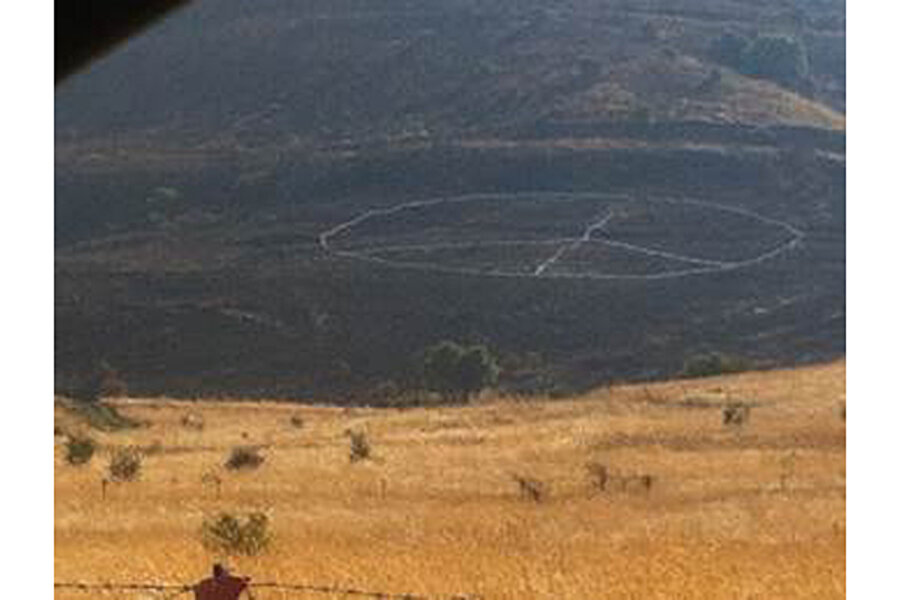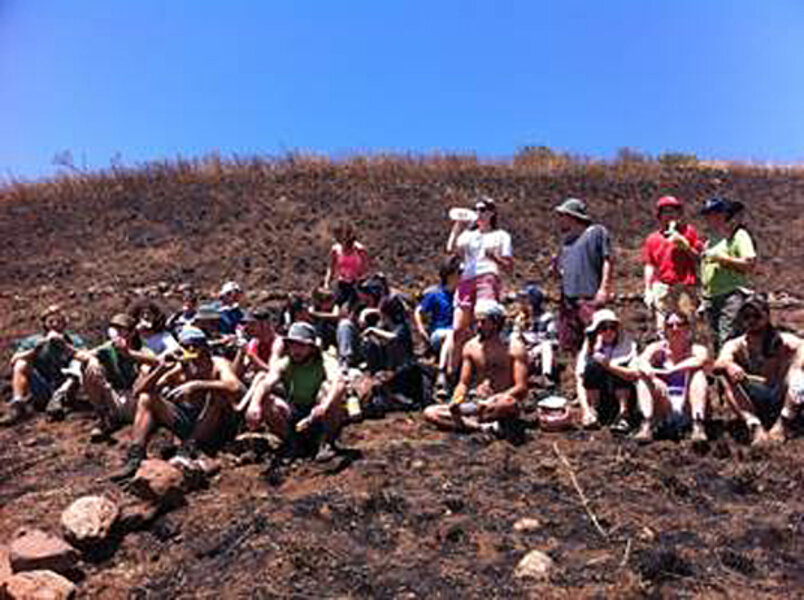A sign of peace rises on the edge of Syria
Loading...
| Jerusalem
Amid the smoke of battle in Syria, a sign of peace has emerged – literally.
Over the weekend, young Israelis constructed a giant peace sign on the slopes of the Golan Heights in an effort at citizen-to-citizen diplomacy.
The Syrian civil war has killed close to 100,000 people in the past two years, as an increasingly violent rebel movement seeks to overthrow the heavily armed Assad regime that has ruled for four decades. While the war is not directed at Israel, there is growing worry that the violence could spill over into the Golan Heights, which Israel captured from Syria in the 1967 war with its Arab neighbors.
In recent months, numerous mortars, rockets, and small fire have landed in the Golan. Rebels briefly seized the Israel-Syria border crossing in Quneitra in June and cross-border fire set off sirens just two days ago.
One night this spring while hearing the bombing from his bed, Golan resident Amir Sade decided it was time for Israeli citizens to convey a message of shared humanity to their beleaguered neighbors.
“I thought to myself … I am sleeping here, two kilometers (1.2 miles) from there, for two years already, and I thought that we need to tell them what we think … They should know what we want – not the [Israeli] government, not the politicians, but the citizens in the Golan.”
So the next time he had a break in his engineering studies, he organized 30 people from his community, Kibbutz El-Rom, to build a peace sign out of basalt rocks on the lower slope of a mountain near the de-facto border. By Friday evening, it was completed, with a diameter of more than 150 feet.
He confesses he knows little about life or politics in Syria, though he supports the popular uprising against President Bashar al-Assad.
“I would like to see the people rising up, but I absolutely don’t know a thing about Syria,” he says in a phone interview. “I’m kind of living in this peaceful area in the Golan but there is war there, I don’t have any idea what they’re going through.”
If he could communicate to his neighbors with words in addition to his peace symbol, what would he say?
“I will say, ‘Let’s live together, let’s make it together. We’re the same people who want the same things,’” he says, adding that he would love to visit their country. “I want to go to eat kenafeh [a popular dessert] in Damascus without [a] border.”









